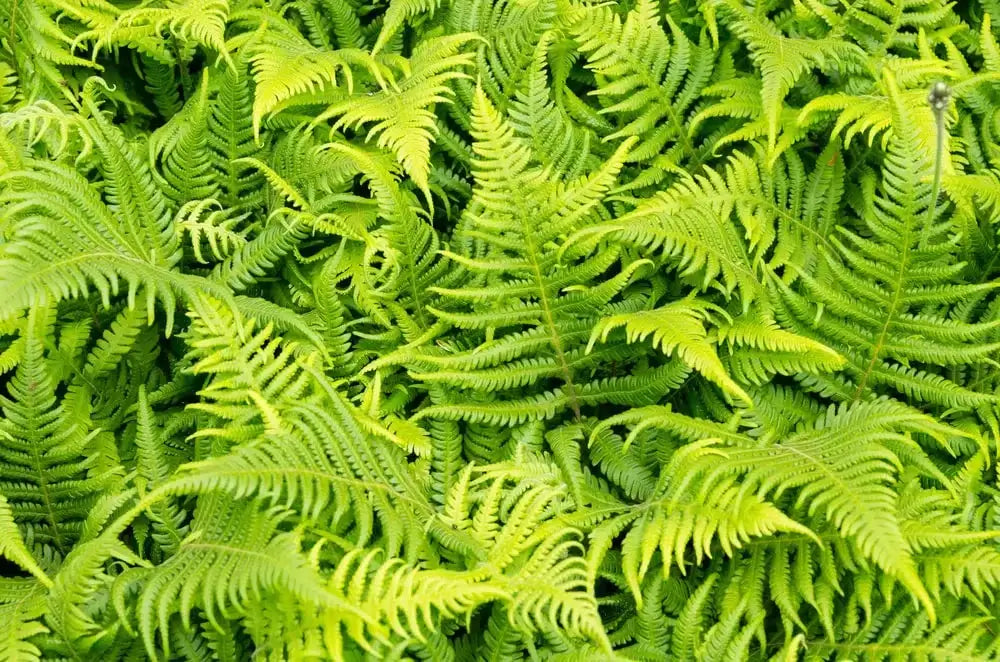
Native Fern Plants Are A Beautiful and Diverse Species
Share
Native fern plants are beautiful and diverse species that add a touch of elegance to any garden or natural landscape
However, like all plants, they are susceptible to various pests and diseases hindering their growth and vitality. This article will explore common problems and conditions affecting native fern plants and their identification, prevention, and control methods.
Scale insects are one of the most typical pests that affect fern plants. They are small, immobile insects that attach themselves to the fronds or stems of ferns. They feed by sucking the sap from the plant, causing yellowing, wilting, and stunted growth. Look for tiny, raised bumps or scales on the fern's surface to identify scale insects.
Prevention and Control: Regularly inspect your fern plants for signs of scale insects. Use a gentle brush or fabric soaked in a mild soap solution to remove the scales manually. Apply horticultural oil or insecticidal soap according to the manufacturer's instructions to control severe infestations.
Aphids: Aphids are another standard pest that can infest native ferns. Small, soft-bodied insects feed on the plant's sap, causing the fronds' wilting, distortion, and yellowing. Look for clusters of tiny insects on the fern's or curled leaves' undersides.
Prevention and Control: Introduce natural predators like ladybugs or lacewings to control aphid populations. Use a strong water jet to dislodge aphids from the fern's foliage.
Mealybugs: Mealybugs are soft-bodied insects that resemble tiny cotton balls. They often congregate in colonies on fern plants' fronds and leaf axils. Mealybugs feed on the plant's sap, causing wilting, yellowing, and the presence of a sticky honeydew residue.
Prevention and Control: Remove mealybugs manually using a cotton swab dipped in rubbing alcohol or a soapy water solution. Introduce natural predators like ladybugs or parasitic wasps.
Leaf Spot Diseases are fungal infections that cause small, circular spots on the fern's fronds. These spots may be yellow, brown, or black and can merge to form larger lesions. Leaf spot diseases weaken the fern and may cause premature defoliation.
Prevention and Control: Provide adequate spacing between fern plants to improve air circulation. Remove and destroy infected fronds to prevent the spread of the disease. Apply fungicides containing copper or sulfur according to the manufacturer's instructions to control severe infections.
Rhizome Rot: Rhizome rot is a common fern disease caused by fungal pathogens. It leads to the decay of the fern's underground rhizome, resulting in wilting, yellowing, and collapse of the fronds. The affected rhizome may develop a soft, water-soaked appearance and a foul odor.
Prevention and Control: Extract and kill infected plants to prevent the spread of the disease. Apply fungicides containing active ingredients like thiophanate-methyl or fetal aluminum to control severe infections.
Rust Fungus: Rust fungus is a common fungal disease affecting ferns, causing small, raised pustules on the underside of the front. These bumps may appear orange, yellow, brown, or black, depending on the stage of the infection. Severe infections can lead to defoliation and weakened plant vigor.
Prevention and Control: Remove and destroy infected fronds to prevent the spread of the disease. Avoid overhead watering and provide spacing between fern plants. Apply fungicides containing active ingredients like myclobutanil or propiconazole according to the manufacturer's instructions to control severe infections.
Prevention and Control: Use nematode-resistant fern varieties whenever possible. Practice crop rotation and avoid planting in the same area consecutively. Apply beneficial nematodes or nematicides according to the manufacturer's instructions to control severe infestations.
Native fern plants are susceptible to various pests that can impact their health and appearance
Regular monitoring, proper cultural practices, and timely intervention are vital to effectively preventing and managing these issues.
By understanding the common pests and diseases that affect native fern plants, you can take appropriate measures to keep your ferns thriving and vibrant. Preventing pests and diseases in native ferns is essential for maintaining their health and vitality.
Here are some preventive measures you can take: Plant Selection: Choose healthy ferns from reputable sources. Check the plants for signs of nuisances or diseases before purchasing or planting them. Select native fern species resistant to common problems and conditions in your region.
Proper Planting: Ensure you plant ferns in well-draining soil with appropriate moisture levels.
Avoid overwatering, as excessive moisture can create favorable conditions for pests and diseases. Provide sufficient spacing between plants to allow for proper air circulation, which helps prevent fungal infections.
Sanitation: Practice good garden hygiene by regularly removing fallen leaves, debris, and dead fronds. It reduces the potential habitat for pests and pathogens.
Dispose of the removed plant material away from the ferns to prevent the spread of diseases. Watering Practices: Water the ferns at the base to keep the foliage dry, as moist leaves attract pests and encourage fungal diseases.
Avoid overhead watering, especially during the evening, as it can promote the growth of fungal pathogens. Use a drip irrigation system or water directly at the soil level.
Mulching: Add organic mulch around the base of the ferns to suppress weeds and retain moisture. However, ensure not to heap the mulch against the fern's crown, as it can create a damp environment that attracts pests and promotes disease development.
Regular Inspection: Inspect your fern plants for any signs of pests or diseases. Check the fronds, stems, and underside of leaves for pests like aphids, scale insects, or mealybugs. Look for discoloration, spots, lesions, or wilting, which may indicate the presence of diseases. Early detection allows for timely intervention.
Beneficial Insects: Encourage helpful insects, such as ladybugs, lacewings, or parasitic wasps, in your garden. These natural predators feed on common pests like aphids and help keep their populations in check.
Quarantine: If you bring new ferns into your garden, it's advisable to quarantine them for a few weeks before introducing them to the rest of your plants. It allows you to observe them for any signs of pests or diseases and prevents the potential spread to healthy ferns.
Fertilization: Avoid over-fertilizing ferns. Follow recommended fertilization guidelines and use a balanced, slow-release fertilizer to promote healthy growth without stimulating excessive foliage.
Integrated Pest Management (I.P.M.): Implement an Integrated Pest Management approach, which involves preventive measures, regular monitoring, and targeted interventions when necessary. This approach minimizes chemical pesticides and emphasizes biological, cultural, and mechanical control methods.
Follow Preventive Measures For A Healthy Environment For Your Ferns
By following these preventive measures, you can create a healthy environment for your native ferns, minimizing the risk of pests and diseases and ensuring their long-term well-being.
#nativeferns #Christmasferns #ladyferns #hayscentferns #TNNursery
https://www.tnnursery.net/blogs/tn-nursery-blog/tennessee-wholesale-nursery-nurseries-reviews
https://www.tnnursery.net/pages/reviews
https://www.tnnursery.net/blogs/tn-nursery-blog/tn-nurseries-reviews
